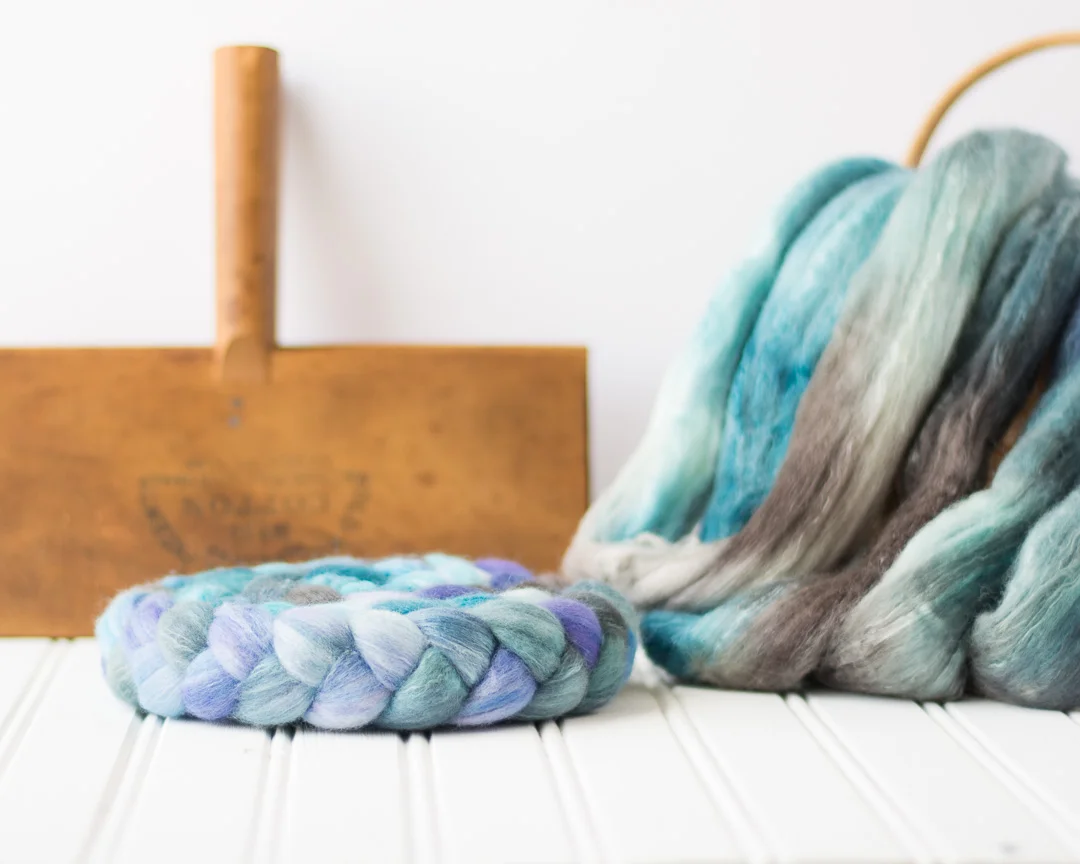Spinning wool/silk blends with confidence
A delicious blend of 80% Organic Polwarth and 20% Bombyx silk, new to the shop, shown here in Still Waters Run Deep
There's a new fiber in the shop (right now it's just on a few colorways, but more are coming): a blend of 80% Organic Polwarth and 20% Bombyx silk. So I thought it would be timely to talk a bit about the challenges that wool/silk blends can offer. For one thing, silk is a lot more slippery than wool, which can be an issue if you've got the tension on your wheel cranked up too high.
What's more, blending together a short-stapled, crimpy wool like Polwarth, and a smooth, inelastic, long-stapled fiber like silk is likely to create some subtle inconsistencies in commercially-blended top. And these inconsistencies can then find their way into your singles.
The question then becomes, “How much inconsistency is too much?”
Some spinners find great beauty in this type of minor imperfection … a wayward slub or two of unblended silk can be a thing of loveliness to this spinner. Other spinners will meticulously pick out each slub as it appears. Regardless of which outcome I am seeking, I do prefer to be in control of my end results and so I always sample (drafts, whorls, plybacks, etc.) before committing to a spin.
If you are seeking a smoother, shinier end result from a wool and silk blend, here are some ideas:
- Try adding a woolen touch to that short forward draw by keeping your fingertips apart after drafting each length of fiber. Instead of smoothing down the newly-formed yarn, allow this twist of air between your hands to fill the plane instead. Inconsistencies will be less notable, especially after you finish your yarn.
- Go with a plied yarn instead of a singles. More plies help to spread out any variances in structure.
- Comb your top. It’s your fiber and you can do with it as you please, including processing it one step further.
- Spin from the fold, in this case, specifically long draw or supported long draw (which will yield that same woolen vortex of air as suggested in No.1).
As always, take the time to get to know each bump of fiber by sampling using not only different drafts, but also by experimenting with different whorls/pulleys, ratios, uptake, to make sure you are happy with the amount of twist in your singles. And of course, make sure that your posture is what it should be so that you can enjoy your spinning for many more years to come.

